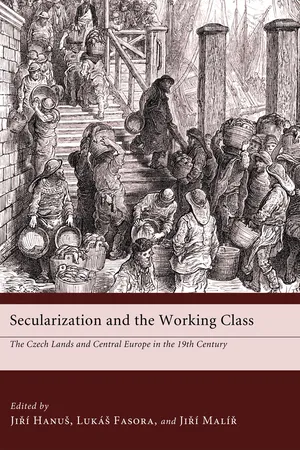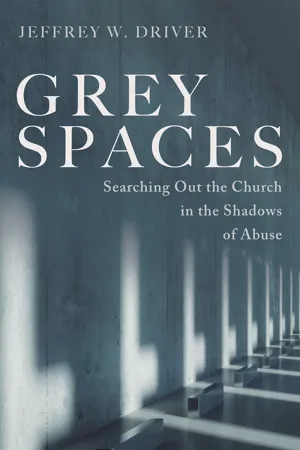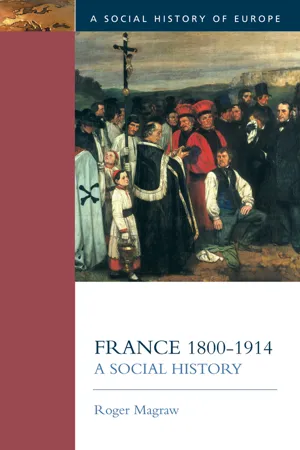Politics & International Relations
Anti-clericalism
Anti-clericalism refers to the opposition to the power and influence of the clergy in political and social affairs. It is often associated with movements that seek to limit or eliminate the role of religion in public life, and promote secularism and rationalism instead. Anti-clericalism has been a significant force in many countries throughout history, particularly in Europe and Latin America.
Written by Perlego with AI-assistance
Related key terms
Related key terms
1 of 4
Related key terms
1 of 3
4 Key excerpts on "Anti-clericalism"
- eBook - ePub
Explaining Religious Party Strength
State Capacity, Social Services, and Religious Civil Society
- Mário Rebelo(Author)
- 2022(Publication Date)
- Routledge(Publisher)
Skocpol 1982 :274).There are four reasons why anticlerical policies create a favourable environment to the political mobilization of religious activists. First, the feeling of injustice and persecution generated by anticlericalism can politicize religious individuals who might have been apolitical, making them more receptive to mobilization by a confessional party (Ivarsflaten 2008 :4–5; Simmons 2014 :513–516; Snow and Soule 2010 :23; Tilly 1978 :134–135). Contexts of state repression generate bonds among people who might previously been strangers to one another or did not conceive of themselves as having a common purpose. Typically, negative feelings such as resentment or moral outrage tend to translate into a broader rejection of the perceived perpetrator of injustice – in this case the secular state or the anticlerical political groups in control thereof (Balcells 2012 :314–315).Second, religious elites become more legitimate in the eyes of individuals in the religious community when they bear the brunt of anticlerical attacks. This is a typical “rallying around the flag” phenomenon that increases the popularity of political leaders when faced with an outside threat. Third, anticlericalism facilitates collective action by binding the religious community closer together. The experience of facing a powerful and fearsome adversary fosters a siege mentality that supresses intra-religious differences and imposes overwhelming pressures towards uniformity and groupthink (Forsyth 2019 :397; Tajfel 1982 :15). Norms of collective dependence enforced by the religious group solidify shared communal understandings and dissuade free-riding (Clark 2003 :16–18; LeBas 2011 :44–47; Levitsky and Way 2013 :5–17; Lipset 1960 :83–87). In general, episodes of intense social conflict tend to generate strong partisan attachments and robust in-group cohesion, attributes which facilitate successful party-building (Huntington 1968 :415–417; Levitsky, Loxton, and Van Dyck 2016 :3; Lipset and Rokkan 1967 - eBook - ePub
Secularization and the Working Class
The Czech Lands and Central Europe in the 19th Century
- Fasora, Hanus(Authors)
- 2011(Publication Date)
- Pickwick Publications(Publisher)
55 He also emphasized the fundamental difference, which according to him was between the isolated, individualistic and sometimes self-serving liberal form of Anti-clericalism and the Anti-clericalism of the Social Democrats, which was to be part of the struggle to change all of society. He therefore criticized those members of Social Democracy who overrated Anti-clericalism and who often read more anti-clerical pamphlets and prioritized activities with Free Thought at the expense of their knowledge of the socialist classics and work for the party, even attacking other Social Democrats for not leaving the Church.The hardening attitude of Social Democracy towards Free Thought cooled their mutual relationship and finally led to the formation of a purely Social Democratic atheist organization in 1913, the Association of Socialist Monists in Austria, whose leader was the editor of Právo lidu [People´s Justice], F. V. Krejčí. The party’s influence on the Association of Monists was assured by the fact that only atheists who were members of Social Democracy could join it.56 Šmeral’s ascendancy and the development of the relationship of Social Democracy to the question of religion in the years prior to World War I signalled that the leaders of the party were attempting to clearly demarcate the Anti-clericalism of Social Democracy from the atheist movement and the Anti-clericalism of other political and interest groups, and to subordinate the anti-clerical campaign and the atheist movement to the overall aims of Social Democracy, as well as keep those members of the Social Democratic Party who remained believers.57 - eBook - ePub
Grey Spaces
Searching Out the Church in the Shadows of Abuse
- Jeffrey W. Driver(Author)
- 2022(Publication Date)
- Cascade Books(Publisher)
213 Used in this general sense, a degree of clericalism in the church can be regarded as necessary and even beneficial. However, in more modern usage, the word “clericalism” is not such a neutral term.The Australian royal commission report refers to clericalism as the theological belief that the clergy are different to the laity, with an idealization of the priesthood linked to “a sense of entitlement, superiority and exclusion, and abuse of power.”214 Clericalism understood in this way displays all the negative characteristics we have noted of other leadership elites; it can be excluding of those on the outside, coercive of those on the inside, secretive and highly self-protective, with all these general characteristics being amplified by a sense of divine authorization.Theological props to clericalismEven now, when people are described as having received a call by God, the common assumption is that they are heading towards ordination, the religious life, or missionary service. When people who offer themselves to clergy selection processes are advised that they should consider their vocation outside of ordination, they not uncommonly experience this as profound rejection and a devaluing of their desire to offer their best to God. Some of these people are already offering invaluable service to the world with skills and attributes that should be the subject of the profoundest vocational affirmation. Yet the message they often receive from the church is that the most serious expression of vocation involves ordination. It is a distortion that not only panders towards clericalism, but turns the mission of the church in on itself. - eBook - ePub
France, 1800-1914
A Social History
- Roger Magraw(Author)
- 2014(Publication Date)
- Routledge(Publisher)
Chapter 4Religion and Anti-clericalismIntroduction
Secularisation or religious revival?
The authors of an authoritative religious history of modern France claim that the historiography of French Catholicism is overdependent on a discredited metanarrative which assumes that ‘modernisation’ entails secularisation (Cholvy and Hilaire 1985–86). Secularists once rejoiced at the prospect of science, education and democracy consigning ‘obscurantist’ religion to richly deserved oblivion. Zola depicted the last priest saying the last Mass in the last church. It is struck by lightening, the curé crushed by a falling crucifix. His body turns to ashes, which blow away in the wind! By 1950, with the Catholic hierarchy discredited by collaboration with Vichy and workers voting Communist, sociologists assumed that the Church had ‘lost’ the popular classes. Worker-priests blamed their own church for this, arguing that its alliances with the wealthy rich and its reactionary politics had betrayed the poor and ignored aspirations for social justice (Pierrard 1984). Ironically, Marxism, not Catholicism, now risks consignment to the rubbish heap of history. Unilinear narratives of secular progress are no longer in vogue. Too many historians, it is now claimed, assumed that a decline in religious practice in a particular region at a particular moment constituted the watershed – that thereafter ongoing decline was inevitable. Studies of dioceses such as Orléans were taken to show that 1830, or 1848, marked decisive moments in the rise of popular Anti-clericalism or religious indifference (Marcilhacy 1964).The new orthodoxy accepts that Catholicism suffered blows in the 1790s and in the early Third Republic, but sees no definitive victories for the forces of secularisation. The decades after 1810 witnessed a religious revival, marked by the post-Concordat reconstruction of the Church, a rise in vocations, expansion of Catholic education, ‘ultramontane’ piety and the emergence of a more ‘personal’ religion involving frequent communion. In some dioceses the nadir of religious practice was reached in the 1900s, after which indices of religious vitality pointed upwards. The ‘new social history’ exhibited little sympathy for religion, treating it as an expression of ‘false consciousness’ or an instrument of social control. Younger historians suggest that religion offered positive ‘resources’ for the weak and powerless. Feminists claim that it provided a ‘site’ of ‘female agency’ in a society which denied women access to the public sphere. Regionalists have emphasised its contribution to the vitality of peripheral cultures struggling against centralisation.
Index pages curate the most relevant extracts from our library of academic textbooks. They’ve been created using an in-house natural language model (NLM), each adding context and meaning to key research topics.
Explore more topic indexes
Explore more topic indexes
1 of 6
Explore more topic indexes
1 of 4



